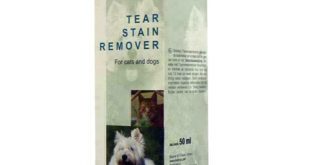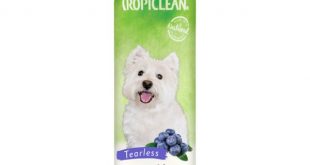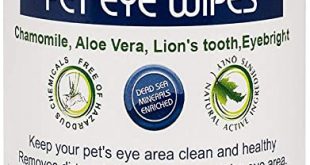Everyone loves a cute little pup with shiny white fur. It’s the most adorable thing in the world to watch your favorite ball of clouds trot around the house. You probably take care of your dog’s coat religiously, making sure to keep it as hygienic as possible. But there’s one thing you can’t control: tear stains.
Tear stains are one of the things that’ll inevitably ruin the perfect, squeaky-clean appearance of your dog’s coat. It’s like dropping a glass of wine on your favorite white carpet. But while cleaning your carpet can be quite a hassle, getting rid of your dog’s tear stains doesn’t have to be. There are tons of home remedies that can help treat tear stains. You just need to know what you’re doing. Also even though we are suggesting Home remedies in this article we still think Tylosin is the best solution for Tear stains and you may purchase Tylosin Powder here. Lets get into it!
What are Tear stains?

Tear stains, which are also known as Poodle eye, are pretty self-explanatory. They’re reddish-brown stains that form around your dog’s eyes due to excessive tearing. They aren’t something you should just ignore, since they leave your dog looking a bit messy and unappealing. These tears create a moist medium that is perfect for yeast infections. That’s why it’s a smart idea to get rid of these tear stains before an infection begins to form.
What Causes Tear Stains in Dogs?
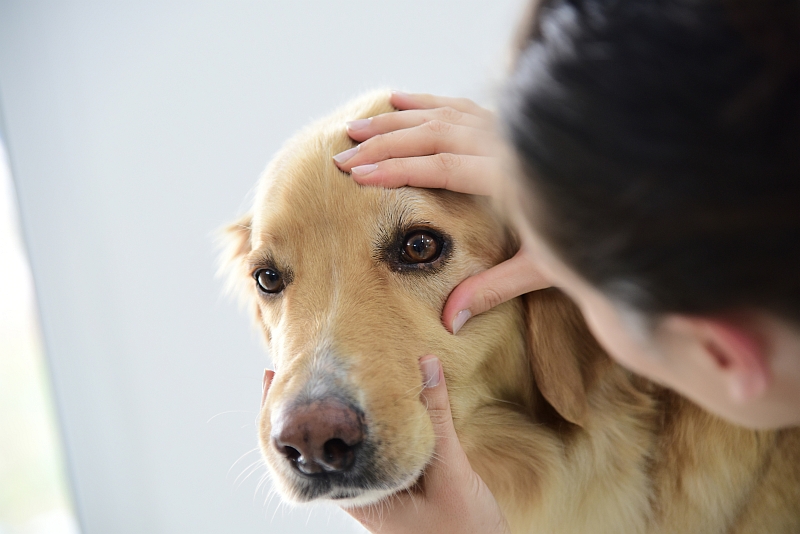
Not all dogs get tear stains. While it’s common in white-fur pups, there are several factors that influence tear stain formation in dogs. It mainly depends on health status, diet, and genetics. Some dogs are just born with a certain eye structure that is unique to their breed and causes them to tear excessively. Subsequently, you get tear stains.
This excessive tearing creates a moist medium that is perfect for bacterial and fungal growth, often leading to infections like yeast infections. Some infections are so severe, an unpleasant odor can develop.
Are Tear Stains Dangerous?
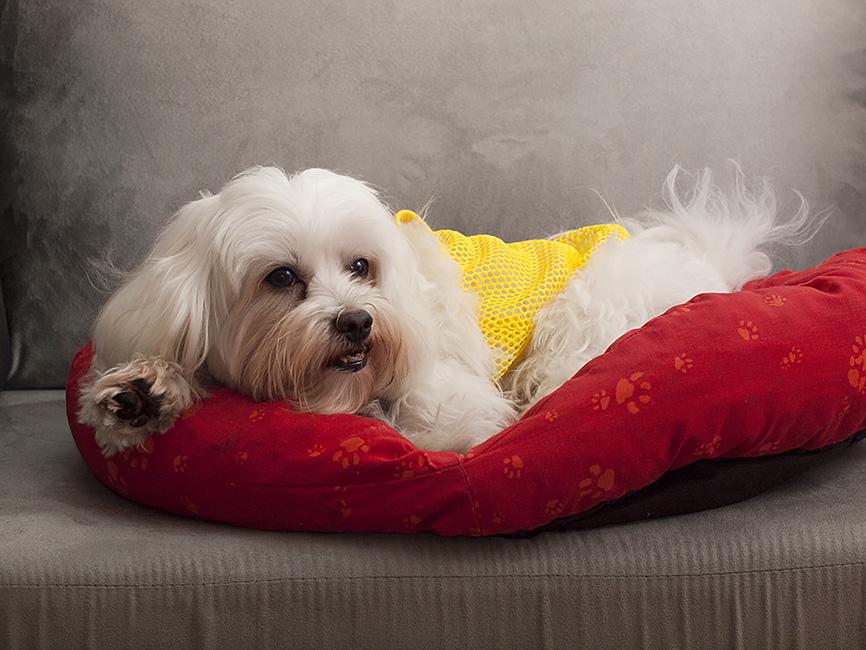
The most immediately apparent problem with tear stains is that they’re unappealing. No one likes seeing dark reddish-brown streaks around their pup’s eyes. That being said, there are a few things you should worry about besides appearance.
Tear stains are often associated with infections. All the excessive moisture from tearing creates a medium that is ripe for bacterial and fungal growth. These infections are usually mild, requiring some low-dose antibiotics. However, some cases can be more severe if left untreated. That being said, most tear stains don’t even require medication. You can get rid of them with a few nifty home remedies.
Best Home remedies for Treating Tear Stains in Dogs
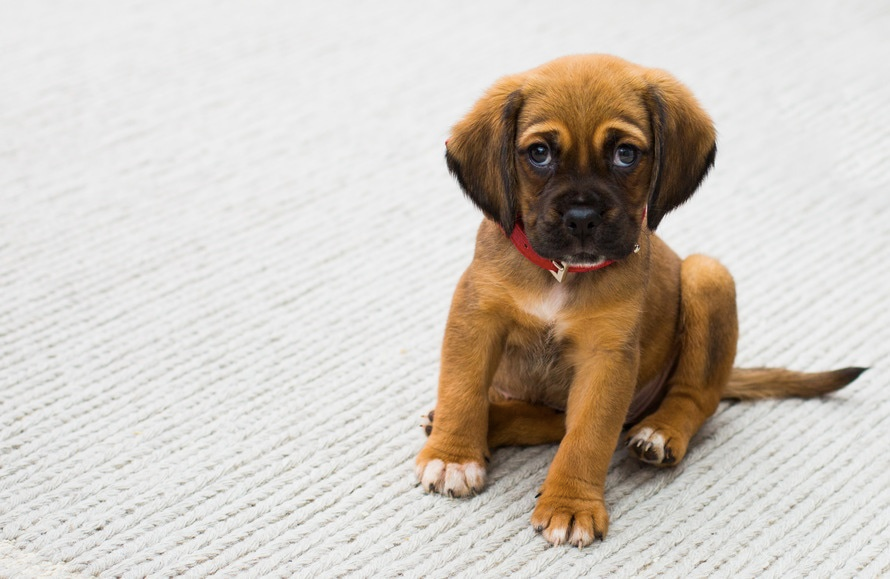
Before you starting making your home remedy for tear stains, you have to keep one thing in mind: proportions and concentrations are important. You want to mix the right amounts and strengths together so that the mixture would clear away tear stains, but not harm your pup. It’s also vital to stick to the area around the eyes and to not get any solutions in your dog’s eyes. Now, here are a few great home remedies for a cleaner dog that you can try in a matter of minutes.
White Vinegar
Perhaps one of the most famous home remedies for tear stains in dogs is white vinegar. Why? Because vinegar not only helps get rid of tear stains, but it also helps prevent new stains from forming later on. What’s the secret? Well, it’s not really the vinegar itself that works the magic.
The idea is that white vinegar creates a perfect acidic medium capable of eliminating bacteria and yeast that form around the eyes. This acidic medium also help prevent bacteria and yeast from clinging to your pup’s fur and causing tear stains. In other words, white vinegar works as a treatment and as prophylaxis.
All you have to do is get a small cotton ball, dip it in the vinegar, and wipe away the tear stains. Just make sure not to get any in its eyes. You can also add a teaspoon of white vinegar to your dog’s water if you want the internal benefits of vinegar to go to work. If you’d like, you can even substitute white vinegar for apple cider vinegar. They both work perfectly.
Cornstarch
Another great home remedy for tear stains is cornstarch. The idea behind it is quite simple. You know how starch basically absorbs any kind of water or moisture it comes across? Well, that’s exactly what happens with tear stains. The cornstarch simply sucks up excess tears and helps eliminate poodle eye. The mechanism’s pretty easy but preparing the cornstarch is the difficult part. Here’s how.
First, get some hot water. Throw in 2 tsp of cornstarch and just one drop of bleach. Let that cool down for a little. Once it reaches room temperature, you can use it to clean your dog’s tear stains. It’ll take the mixture about an hour to dry up and after that you can wipe it off with a damp towel or cloth.
If you can’t find bleach or don’t like handling hot water, not to worry. There’s another alternative home remedy you can try. All you need is cornstarch, milk of magnesium, and 3% hydrogen peroxide. Mix these three together in equal parts and you’ll get a paste that can be used to clean tear stains in dogs. Leave it for about an hour to dry before rinsing it carefully with water.
Regardless of which cornstarch remedy you choose, be careful not to get anything in your pup’s eyes.
Face Cream and Powder
It might sound a little weird but it’s true. You can actually use face cream and powder to get rid of tear stains in your dog. Sure, this isn’t really a permanent solution, but it can help freshen up your dog before you go for a walk.
Chamomile Tea
One of the most renowned properties of chamomile is its ability to fight inflammation. Its anti-inflammatory properties are excellent for fighting poodle eye. In addition to that, chamomile has strong antibacterial and anti-fungal properties making it quite effective at combating infections. Taking these two qualities into consideration, it’s no wonder chamomile tea is one of the best home remedies for treating tear stains in dogs.
Here’s how to do it. First of all, make a small cup of chamomile tea. Let it reach room temperature. Once it’s reached lukewarm temperature, use a cotton ball to soak up some of the tea. And there you go. You’ve got the perfect tool for cleaning up those pesky tear stains troubling your pup. Make sure to rinse off any residual chamomile with clean water. You don’t want that perfect fur coat to be sticky.
Colloidal Silver
Colloidal silver is another great home remedy for tear stains in dogs. The secret lies in its impressive antimicrobial properties which help it fight bacterial and yeast infections. It also helps get rid of dermatitis caused by moisture. In other words, it’s an excellent means of getting rid of poodle eye. Not to mention it’s quite safe to use around the eye, just make sure it doesn’t go inside. Just repeat the process once or twice a day with a small amount of colloidal silver on a cotton ball.
Hydrogen Peroxide
If you don’t have any cornstarch to make a mixture, you can use hydrogen peroxide all on its own. 3% hydrogen peroxide and equal parts water can be added to a cotton ball and used to gently remove tear stains. Just give the mixture about 5 minutes to work its magic before rinsing it off with clean water. Be extra careful not to get any hydrogen peroxide into your dog’s eyes because it can be quite irritating.
Always stick to clean water
While this isn’t really a home remedy, it is something you should think about if you want to avoid expensive tear stain medication. You should always pay attention to the water your dog is drinking. For starters, tap water is a bad idea and you should definitely avoid it. Why? Well, tap water might seem clear to the naked eye, but it’s full of trouble.
You can find harmful bacteria and all kinds of parasites in tap water. Not only do these contribute to the whole tear stain problem, but they can also cause all kinds of diseases! And that’s not all. Tap water if full of minerals but not the good ones we want inside our dogs’ bodies. It contains harmful minerals like fluoride and chlorine which can cause all kinds of side effects and can be quite toxic to animals. These minerals also increase the chances of tear stains forming and ruining your pup’s perfect coat. In short, tap water is bad news and should definitely be avoided if you’re worried about tear stains.
The same goes for stagnant water. Never let your pup drink stagnant water when going for a walk in the park or at gardens. The kind of water you can find in these places often contains tons of minerals, even more than tap water. And remember, more minerals equal more tear stains so try to avoid them as much as possible.
The best option is to give your dog purified, distilled water. You should also opt for stainless steel or glass bowls, rather than ceramic or plastic ones. Oh, and don’t forget to wash the bowls regularly with soap and water!
Contact Lens Cleaner
Surprised? Yes, contact lens cleaners can actually be used to get rid of tear stains. In fact, it’s quite effective! Here’s the secret. Contact lens cleaners contain boric acid. This magic component has the ability to oxidize the iron components found in tear stains. Eventually, the dark color begins to fade and the stains become lighter, finally disappearing altogether.
Use a cotton ball soaked in contact lens cleaner solution. When wiping away the tear stains, make sure to keep the solution out of your dog’s eyes. Once or twice a day is more than enough to get rid of these stains quickly and effectively.
Diet Changes to Get Rid of Tear Stains
Sure, everyone’s focused on treating or getting rid of tear stains, but take a moment and think about what causes them. One of the things that greatly contributes to tear stain formation is diet. You know how they say “you are what you eat”? Well, it’s true. Grain-based diets aren’t the best option for your dog. Not only is there a possibility of allergies, but grains can also cause long-term health problems. And now you’ve got one more problem: tear stains.
One of the best things you can do is opt for grain-free foods. Pick the highest-quality treats for your dog. If you’d like, you can also throw in a good probiotic for canines. There’s also a natural probiotic that rarely comes to mind: yogurt. Yogurt contains probiotics, immunity-boosting factors, and detoxifying agents. For the best results, you should pick low-fat, plain organic yogurt. It’ll do wonders for your pup’s health and it’ll help keep those tear stains away.
Hygiene and tear stains in dogs
Canine Eyewash
Hygiene is the most important factor to consider when it comes to preventing tear stains in dogs. Talk to your vet about getting a good canine eyewash. It’s an extremely useful tool when paired with a soft cotton ball. Use it to gently wipe away all the tear stains from your pup’s eyes.
Warm Cloth or Baby Wipes
It’s also a good idea to keep a warm cloth around for your pup. Clean the area around the eyes regularly, preferably day and night. You want to keep it clean and dry at all times. You can also use baby wipes, instead. Baby wipes are an excellent tool to have with you throughout the day because you never know when those stains will show up. Make sure to move downwards when wiping the tear stains away.
Trimming the Hair
Regularly trimming your dog’s hair is another thing to keep in mind. Having too much hair around the eyes can lead to irritation, which in turn leads to excessive tearing. And you know what that leads to, right? Tear stains. Just make sure you use a pair of blunt scissors to avoid any kind of injury. After all, some dogs won’t stay put while getting their hair cut.
Tear Stains in Dogs: Tips and Tricks
Air Filter
While it may seem irrelevant at first, your air filter can play an important role in tear stain formation. Having too much dust around the house can cause your dog’s eyes to secrete tears excessively, eventually leading to more and more tear stains. That’s why it’s a good idea to change your air filters regularly. Every 3 months is a good interval.
Baby Powder
One of the things you can apply to the region around the eyes is baby powder. It’s more of a pro tip that people use after bathing their dog. The idea is that baby powder tends to soak up water and any kind of residual moisture. If the area is rendered dry, then there’s very little chance of an infection forming or tear stains collecting around the eyes.
Change the Water Bowl
If you have a plastic water bowl for your dog, you might want to take a moment and throw it away. Plastic is a bad idea. Besides the obvious health hazards, plastic bowls can often develop tiny, barely-noticeable cracks that are ideal for bacterial growth. You should replace plastic food and water bowls with stainless steel, porcelain, or glass ones. They’re a much safer option.
Tear Stains in Dogs: FAQ
Which dogs are most likely to get tear stains?
While it mainly depends on things like health status and diet, there are some breeds that are genetically predisposed to tear stains. Here are a few examples:
- Maltipoos
- Bichon Frise
- Papillion
- Bulldogs
- Cocker Spaniels
- Maltese
- Lhasa Apso
- Shih Tzu
- Shar Pei
Do Tears Stains only develop around the eyes?
Although the word “tear stains” suggests that they only form around the eyes, that’s not necessarily true. Tear stains can form in any region that gets exposed to water or moisture rich in minerals. It’s just a coincidence that tears are full of minerals that cause poodle eye. Some tear stains can develop around areas like the whiskers, beard, and mouth. Some pups even drip water off their chins onto their chest and legs, leading to similar stains.
Do Tears Stains only happen to dogs?
While tear stains are most common in white-fur pups, there are other species that can get poodle eye, as well. For examples, there are breeds of cats that are highly susceptible to tear stains such as Persians, Himalayans, Exotic Shorthairs, Devon Rex, and Scottish Folds.
Conclusion
All of these home remedies are great for treating your dog’s pesky tear stains. That being said, poodle eye usually doesn’t last for more than 2 weeks. If this happens, you should definitely take your pup to the vet. There might be a more serious condition causing these tear stains, although it’s rarely so. It’s just a good idea to rule out the possibility of an infection or underlying causing. After all, what’s more precious than a furry friend with a perfect, shiny coat?
 Total Pooch Dog Supplements, Tear Stain Removers, De-wormers, Tylosin for Dogs and other great products.
Total Pooch Dog Supplements, Tear Stain Removers, De-wormers, Tylosin for Dogs and other great products.
